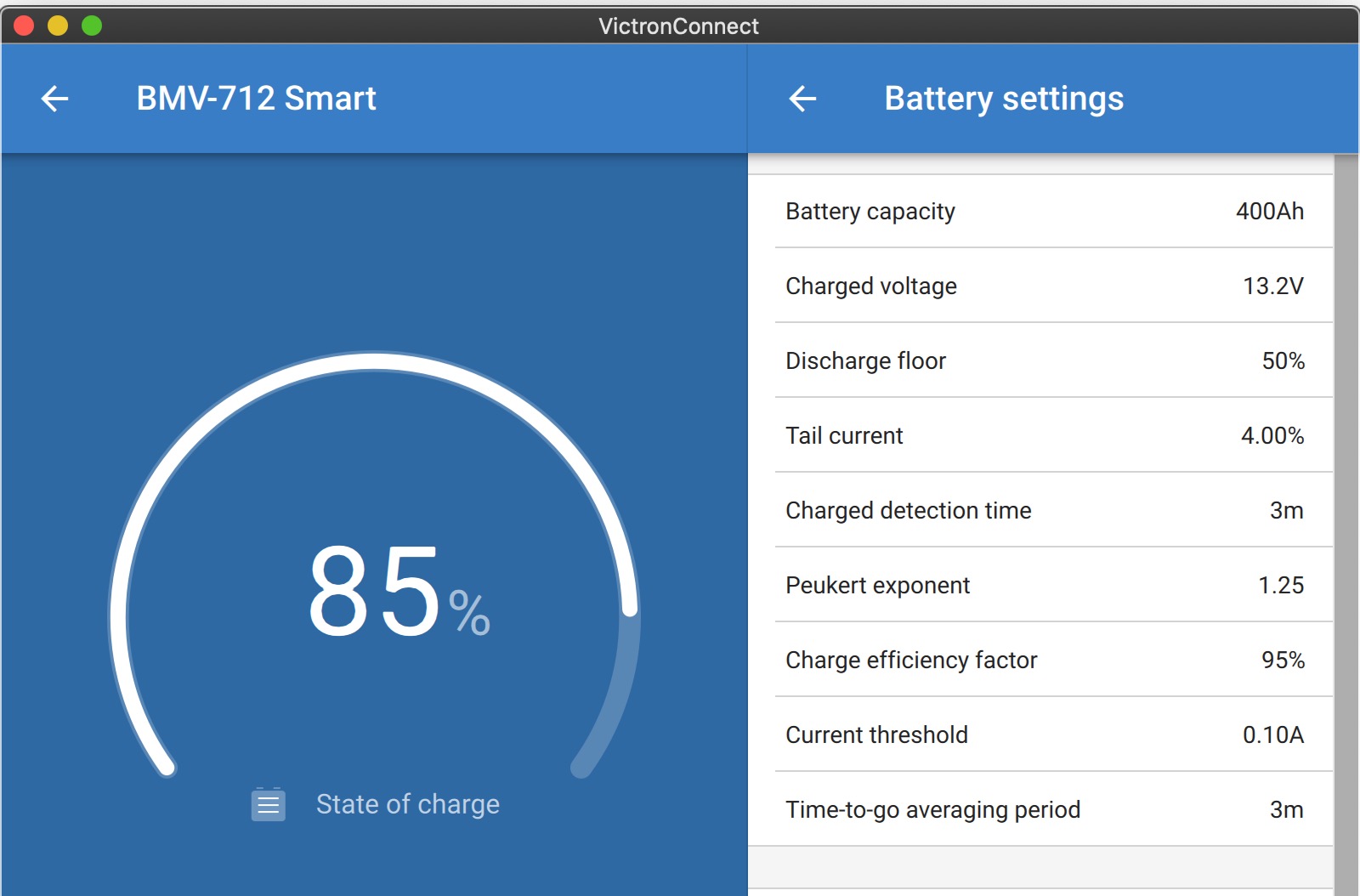According to the data sheet on my LiFe PO batteries (400ahs) the charge voltages and time are as follows:
Absorb Voltage (Uo) (CV) 14.1 to 14.6 Volts
Float Voltage (I) 13.6 to 13.8 Volts
Recommended CV or Absorb Time 15 minutes
What should the charge voltage setting in the 712 bmv be set to?
the manual states that it should be set 0.2-0.3 v below the float voltage which be 13.3 /13.4, but wont the SOC reset to 100% before it gets in to absorb stage?
Thanks

